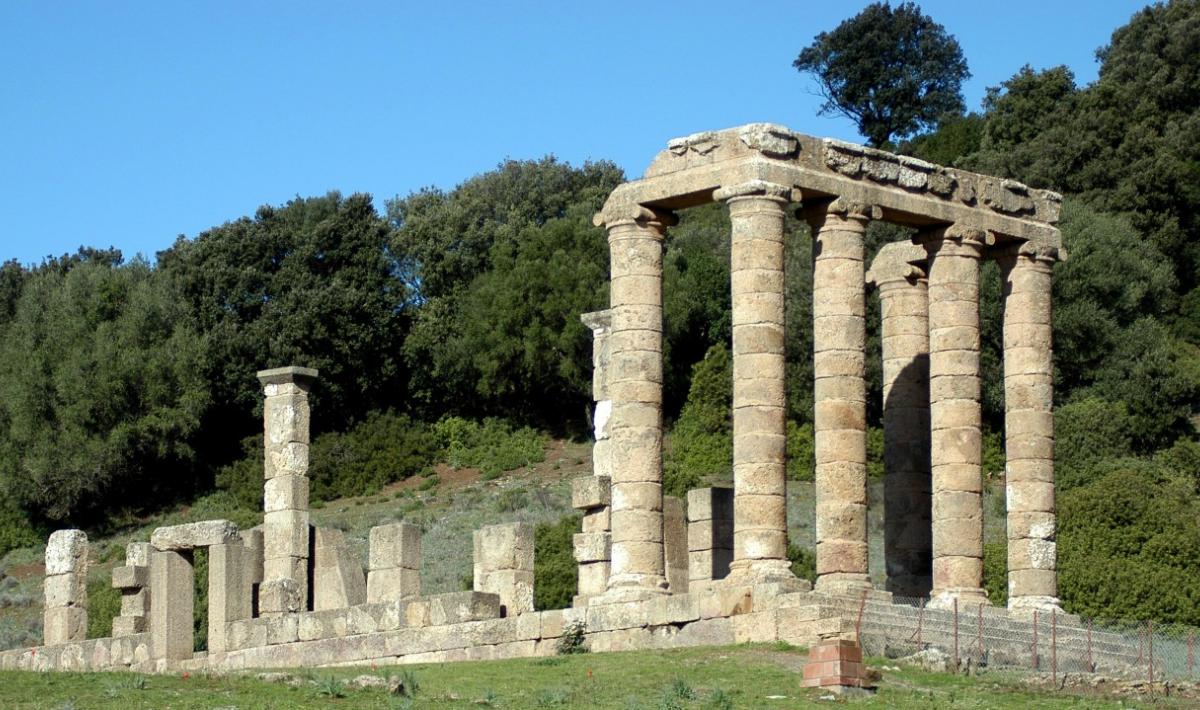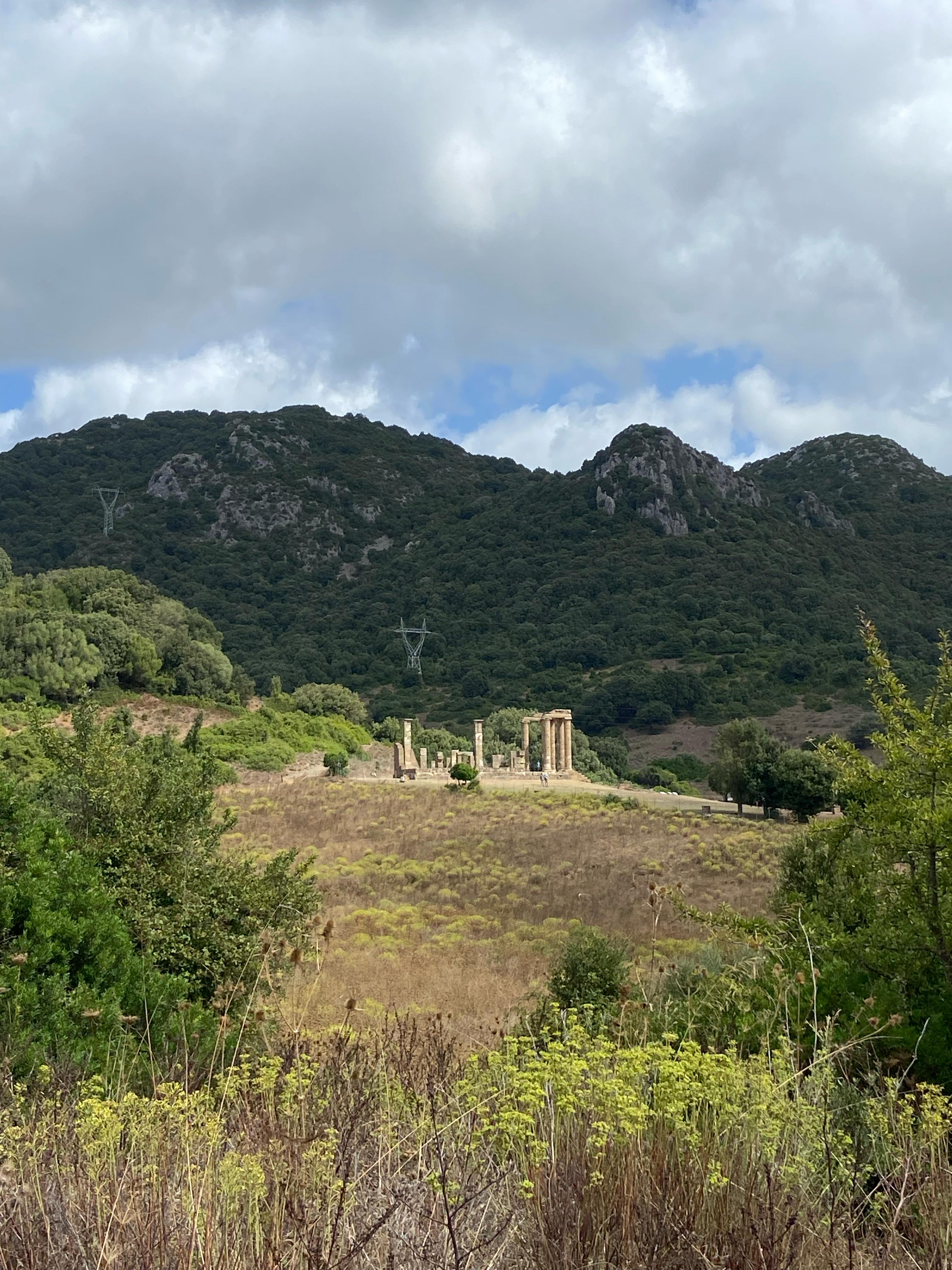A monument from the Roman era on the Island, formerly a Nuragic sanctuary and also in vogue during the Punic period. Built in various phases with local limestone, an access staircase and a podium adorned with elegantly aligned columns remain standing. It was already famous in Antiquity, cited by the Egyptian geographer Ptolemy (2nd century AD).
The current monument is the Roman one, discovered by General La Marmora in 1836 and restored in 1967. It stands in the middle of a valley dominated by Mount Conca s'Omu, which in spring takes on the appearance of a silent Avalon, cloaked in a meadow of white daisies and scented with rosemary.





